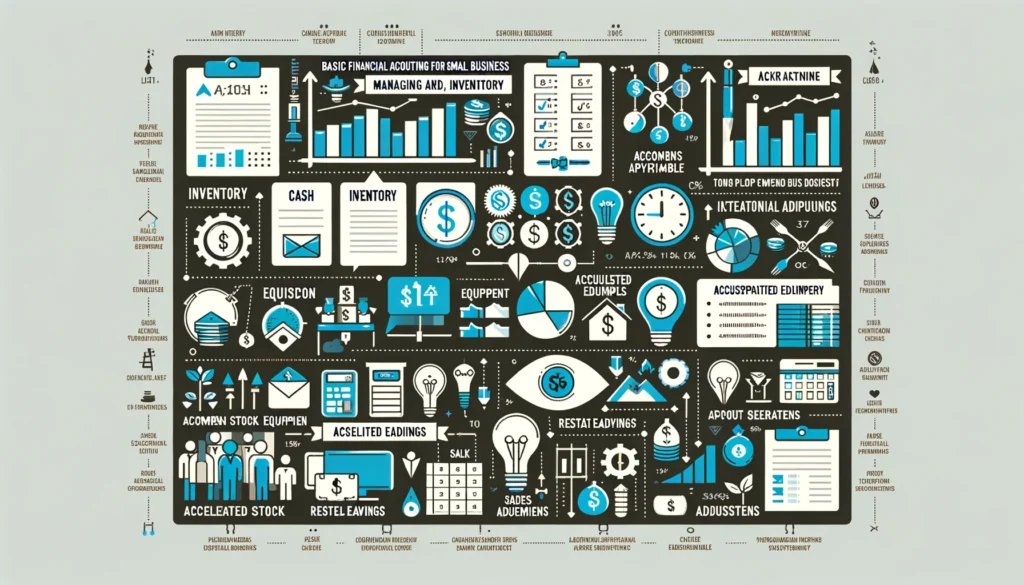In our continued exploration of financial accounting for small businesses, this sixth installment examines the critical aspects of managing inventory and executing precise financial adjustments. These areas are key to accurately portraying your business’s financial status and steering its growth.
Inventory Management: A Core Business Activity The Impact of Inventory on Financial Statements
The Essence of Inventory Management Inventory: More Than Just Stock
Inventory management goes beyond simply keeping track of products. It encompasses the strategies and techniques used to maintain the right balance of stock – not too much to incur high holding costs, and not too little to miss sales opportunities.
Cost of Goods Sold and Inventory Valuation The cost of goods sold (COGS) is directly tied to inventory. Effective inventory management ensures accurate COGS calculation, which is essential for determining gross profit. Additionally, inventory valuation methods, such as FIFO (First-In, First-Out) and LIFO (Last-In, First-Out), play a significant role in financial reporting and tax calculations.
Inventory Turnover Ratio: A Key Metric The inventory turnover ratio, calculated by dividing COGS by average inventory, helps businesses understand how quickly stock is being sold. A higher ratio indicates efficient inventory management and a better return on investment.
Managing Inventory Levels: A Balancing Act Safety Stock and Reorder Points Keeping safety stock and calculating reorder points are crucial for preventing stockouts. Safety stock acts as a buffer, while reorder points signal when it’s time to replenish inventory, ensuring a continuous flow of goods for sale.
Technological Integration for Inventory Control Modern businesses increasingly rely on technology, like inventory management software, to track stock levels, forecast demand, and automate reorder processes. This integration reduces human error and streamlines operations.
Impact of Inventory on Financial Statements Reflecting Inventory in Financial Statements Inventory affects both the balance sheet and the income statement. On the balance sheet, it’s an asset, while changes in inventory levels impact the COGS on the income statement, affecting gross profit.
Financial Adjustments: Refining the Financial Picture Accrued Salaries and Wages: A Liability Consideration
Accrued salaries and wages payable are obligations that the company must recognize, even if the payment is deferred to the next period. This accrual ensures that the expense is recorded in the period when the employee services are performed, adhering to the matching principle in accounting.
Depreciation on Equipment: Reflecting Asset Usage
Depreciation of equipment is another critical adjustment. It allocates the cost of tangible assets over their useful lives, reflecting the consumption of the asset’s economic benefits. For instance, Waylon Company’s monthly depreciation expense on equipment recognizes the gradual reduction in the asset’s value and utility.
Executing Adjustments for Accurate Financial Statements
Adjustments for accrued expenses (like salaries and wages) and non-cash expenses (such as depreciation) are integral to preparing accurate financial statements. They align the recognition of expenses and revenues with the periods in which they are incurred or earned, ensuring that the financial statements comply with accrual accounting principles.
Conclusion
Mastering inventory management and financial adjustments is essential for any small business owner. These processes not only ensure compliance with accounting standards but also provide a clear, accurate view of the business’s financial health. This understanding is crucial for effective decision-making and strategic financial planning.


